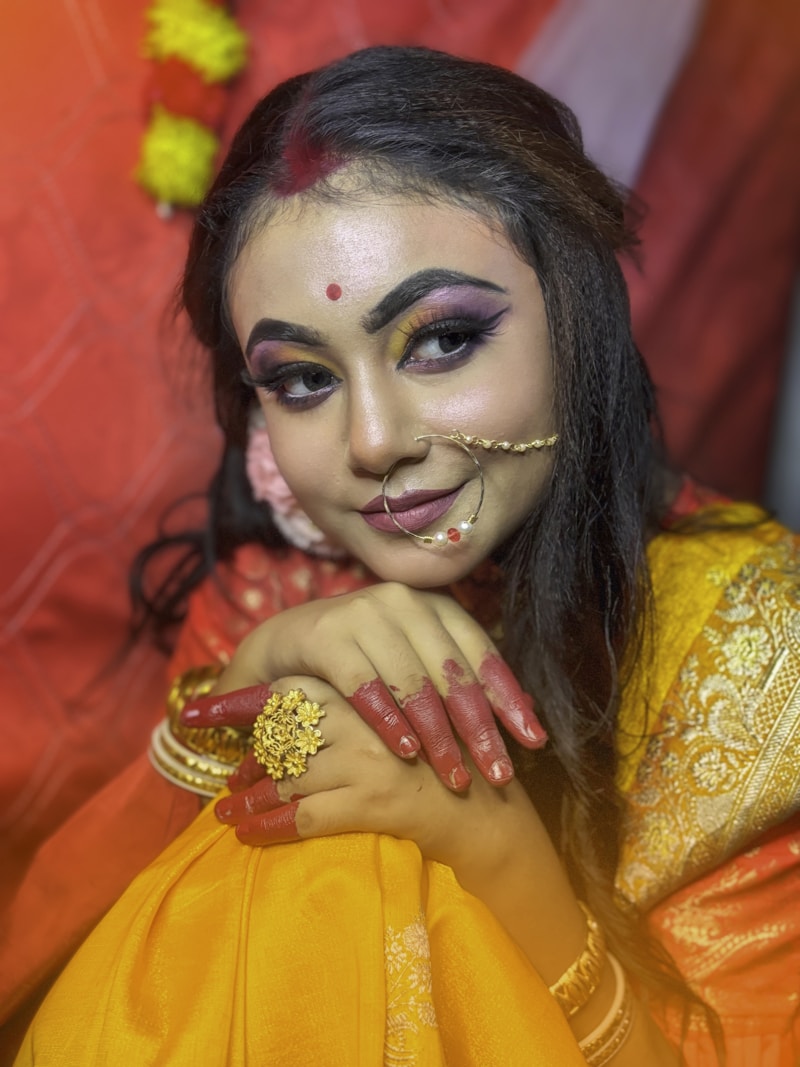Exploring Bridal Beauty Through Different Cultural Lenses
Exploring Bridal Beauty Through Different Cultural Lenses
The concept of bridal beauty is a fascinating topic, rich in cultural significance and aesthetic diversity. Different cultures have unique traditions that shape how beauty is perceived on one of the most important days of a person’s life—the wedding day. This article delves into the various interpretations of bridal beauty, highlighting practices across the globe, examining customs, fashion, and rituals that define what it means to be a beautiful bride.
Understanding the Importance of Bridal Beauty
Bridal beauty is not just about looking good on the wedding day. It symbolizes love, commitment, and the beginning of a new chapter in a person's life. Many cultures have rituals and adornments that enhance a bride's beauty, deeply connected to their history and traditions. This theme is common worldwide but manifests in a multitude of forms.
1. The Definition of Beauty
Beauty is subjective, influenced by personal taste and cultural background. For instance, in many Asian cultures, fair skin is often associated with beauty, while in some African cultures, fuller figures are celebrated. The context, therefore, plays a crucial role.
2. The Role of Rituals in Bridal Beauty
Rituals often precede weddings and play a significant role in enhancing bridal beauty. Various customs, from henna application in Indian weddings to the traditional tea ceremony, involve preparations that focus on the bride's beauty.
| Culture | Rituals | Beauty Standards |
| Indian | Henna application | Fair skin, intricate designs |
| Chinese | Tea ceremony | Red is auspicious |
| Western | Engagement and Bridal showers | Elegant gowns, traditional veils |
| African | Body painting, beadwork | Curves celebrated |
Global Perspectives on Bridal Beauty
3. Traditional Asian Weddings
In countries such as India, China, and Japan, bridal beauty is celebrated through elaborate attire and beauty rituals. Indian brides often wear vibrant red or gold saris adorned with intricate jewelry. The application of mehndi (henna) on their hands follows a ceremony that underscores beauty and auspiciousness.

4. Western Wedding Trends
Western weddings often focus on the classic white dress, which symbolizes purity and new beginnings. Bridal makeup in Western cultures typically emphasizes natural beauty, with a focus on skincare and subtle enhancement. However, modern trends are shifting, allowing brides to express unique styles and personalities.
5. Indigenous and African Celebrations
In many African cultures, traditional bridal beauty is cultivated through body art, vibrant attire, and elaborate hairstyles. Each tribe has its specific customs—some brides wear handmade beaded neckpieces, while others paint their bodies with natural dyes. The celebration of curves and natural beauty is prominent, challenging standard notions found in other cultures.
Bridal Beauty in Contemporary Society
6. The Impact of Social Media
Social media has drastically transformed how bridal beauty is perceived and celebrated. Platforms like Instagram and Pinterest showcase diverse bridal looks from around the world, promoting inclusivity and broader definitions of beauty. Brides today can draw inspiration from a myriad of cultural influences, allowing for personalized wedding aesthetics.
7. Beauty Standards and Body Positivity
As society evolves, so do beauty standards. The rise of body positivity movements has encouraged brides to embrace their natural selves, celebrating unique features, shapes, and sizes. This shift promotes an empowered view of bridal beauty that transcends traditional norms.
Exploring Bridal Beauty and Cultural Preservation
8. Passing Down Traditions
Many cultures emphasize the importance of passing down bridal beauty rituals through generations. Mothers often relay traditions to their daughters, ensuring that cultural practices remain alive. This connection to heritage not only enriches wedding experiences but also reinforces cultural identities.
9. The Challenge of Globalization
While globalization provides a platform for cultural exchange, it also poses challenges. The proliferation of Western wedding trends can overshadow local traditions, leading to a homogenized view of bridal beauty. It is essential to strike a balance between embracing modern influences and maintaining cultural uniqueness.
Conclusion: Celebrating Beauty Across Cultures
Exploring bridal beauty through different cultural lenses reveals a rich tapestry of traditions, rituals, and ideals. Each culture offers unique insights into what it means to be a bride, challenging the standard beauty norms that have been perpetuated over time. As we celebrate diversity, it is vital to acknowledge and respect the cultural significances behind different bridal practices.
When facilitating discussions about bridal beauty, consider the following:
- Embrace and respect individual cultural nuances.
- Acknowledge the influence of globalization on local customs.
- Recognize the evolving nature of beauty standards and the importance of inclusivity.
In conclusion, bridal beauty serves as an expression of love and lifelong commitment while being deeply rooted in cultural heritage. Every bride, regardless of her background, deserves to feel beautiful and celebrated.
